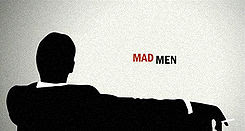
I am very selective with regard to the television that I watch on a regular basis.
The AMC Series Mad Men falls into the category of what I do watch.
It is intelligent television – well written and well acted.
The season four finale aired last Sunday, prompting an onslaught of media coverage including a candid New York Times interview with the show’s creator, Matthew Weiner.
One of the questions focused on the show’s lack of any major African-American (or other minority) characters.
Weiner explained, given the 1965 timeline and within the storyline:
“…this is going to change. By the way, it changes socially. It does not change in advertising. It still has not changed. And I will go to the mat on this thing.”
As a 25 year veteran of the ad industry, I agree with Weiner.
Strides have been made as evidenced by the presence of African-Americans in all facets of the business today.
However, I would not go as far as to suggest that racism does not exist in advertising.
It does.
While the journey is far from over, the fictional arc of where the industry was as portrayed in the show represents the steps taken forward.
To the original points I made, Mad Men is good and entertaining television.
Like the African-American ad executives that Weiner referenced in the interview, I believe that there should not be more African-American characters in the show.
Simply put, it just wouldn’t ring true.
I stand on the shoulders of pioneers like Tom Burrell, Caroline Jones, Frank Mango, Vince Cullers and Madam CJ Walker.
Their efforts may not make it to the Mad Men storyline, but their importance and trailblazing efforts changed the trajectory of the advertising industry.
click here _ for the full New York Times article.






